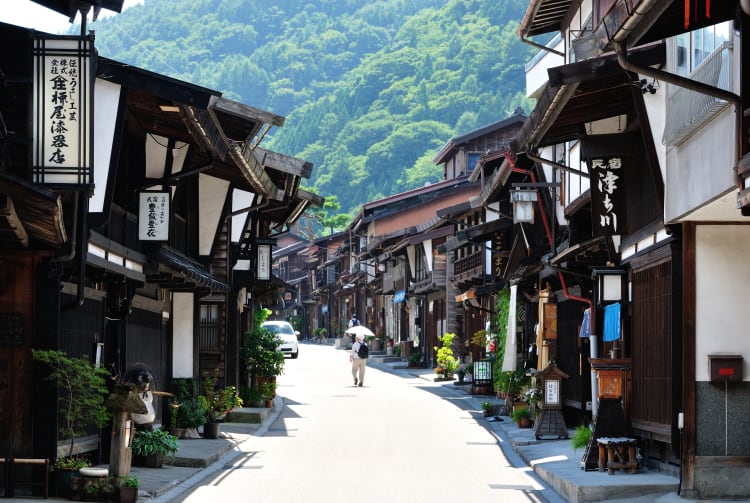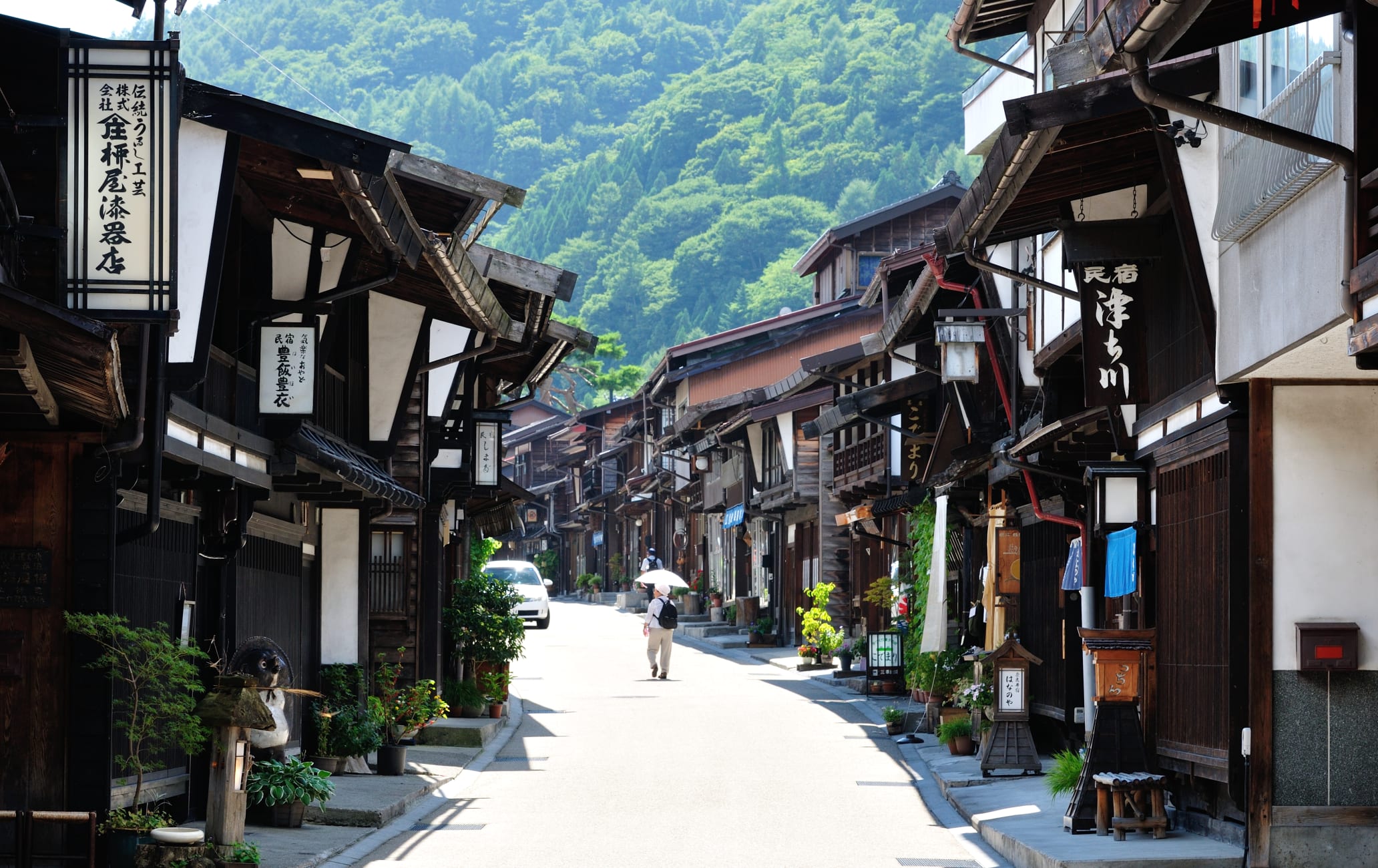Promenez-vous sur cette route commerciale historique pour entrevoir le Japon d'une époque révolue
Reliant Tokyo et Kyoto pendant l'époque d'Edo (1603-1867), la partie la mieux préservée de la route du Nakasendo est un sentier pittoresque qui sinue à travers les montagnes et traverse la vallée de Kiso , dans le sud-ouest de la préfecture de Nagano . Parcourez le sentier et arrêtez-vous dans l'une de ses ville relais, des postes de repos pour les voyageurs fatigués, afin d'entrevoir le Japon tel qu'il était dans le passé.
À ne pas manquer
- Visiter le temple Joshoji historique à Suhara
- Explorer le poste de contrôle de Kiso Fukushima
- Escalader le col de Torii-toge jusqu'à Narai, autrefois la ville relais la plus riche sur la route du Nakasendo
Comment s'y rendre
Vous pouvez rejoindre la route du Nakasendo en train ou en bus longue distance.
Si vous optez pour le shinkansen, prenez la direction de Nagoya avant de changer pour le train JR Shinano Limited Express.
Au départ de Tokyo, vous pouvez également prendre un train Limited Express comme le JR Asuza via la gare de Shiojiri. Vous devrez effectuer plusieurs changements avant d'arriver à la vallée de Kiso.
La célèbre ville relais de Magome dans la préfecture de Gifu est le point de départ habituel pour accéder à la route du Nakasendo. Vous pouvez rejoindre Magome en bus via la gare de Nakatsugawa.
Pour les plus aventureux, la distance entre Magome et Tsumago peut être parcourue à pied en deux heures à deux heures et demie.
La signalisation est en anglais et en japonais, et il existe des services d'expédition de bagages.
Anecdotes
La route du Nakasendo date du VIIe siècle
Elle fut initialement baptisée Kisokaido avant de devenir Nakasendo au début du XVIIe siècle
Les habitants appellent cette route la Kisoji

Parcourez la route du Nakasendo à pied pour découvrir le Japon d'antan
Du début du XVIIe siècle jusqu'à la fin du XIXe siècle, la route du Nakasendo était une importante route commerciale reliant la capitale du Japon, Kyoto, au Tokyo de l'époque d'Edo.
69 villes relais se tenaient sur la route. Ces postes de repos, répartis tous les 10 kilomètres environ, offraient hébergement et divertissement aux marchands, samouraïs, moines errants et autres voyageurs fatigués.



Un lieu figé dans le temps
Bien que la plus grande partie de la route du Nakasendo et de ses villes relais aient succombé au développement moderne depuis longtemps, certaines parties de la région de Kisoji sont restées presque intactes. Modernisée ou pittoresque, la région permet de voir de plus près la vie dans la campagne de Nagano .

À la conquête de la route du Nakasendo
Vous pouvez parcourir la totalité du sentier en quatre ou cinq jours, mais certains randonneurs très motivés le font en trois jours. Bien que vous puissiez évidemment marcher dans l'une ou l'autre direction, beaucoup préfèrent commencer à Magome , à l'entrée sud de la vallée, et continuer vers le nord, car une grande partie du trajet est en descente. Vous passerez devant plusieurs gares le long du chemin, donc si vous vous lassez de marcher, vous pouvez toujours prendre le train jusqu'à la prochaine ville.


Rencontrez les nombreuses statues de Jizo de Kiso
Bodhisattvas et gardiennes de la route, les statues de Jizo se dressent le long de ce chemin tout comme les Dosojin, des icônes shinto représentant un couple humain, censées protéger les voyageurs.


Le périple de Magome à Tsumago
Ces deux villes relais sont deux des étapes les mieux préservées de la route du Nakasendo. Leurs rues principales sont bordées de superbes maisons en bois. Ce trajet pittoresque de trois heures, soit neuf kilomètres, vous emmène de la préfecture de Gifu à la préfecture de Nagano et à la vallée de Kiso.



Du cèdre au bambou
Les paysages se succèdent et ne se ressemblent pas sur le tronçon de la route du Nakasendo qui relie Tsumago à Suhara. Vous découvrirez de magnifiques panoramas, dont des forêts de cèdres du Japon et d'imposantes bambouseraies. Le trek est assez long, 23 kilomètres au total, mais l'effort en vaut la peine. Avant d'atteindre Suhara, vous passez par les villes relais de Midono et de Nojiri, où vous pourrez prendre un train pour Kiso Fukushima si vous décidez de mettre un terme à votre randonnée. Une fois à Suhara, ne manquez pas le paisible temple Joshoji, fondé au XIVe siècle.






















































